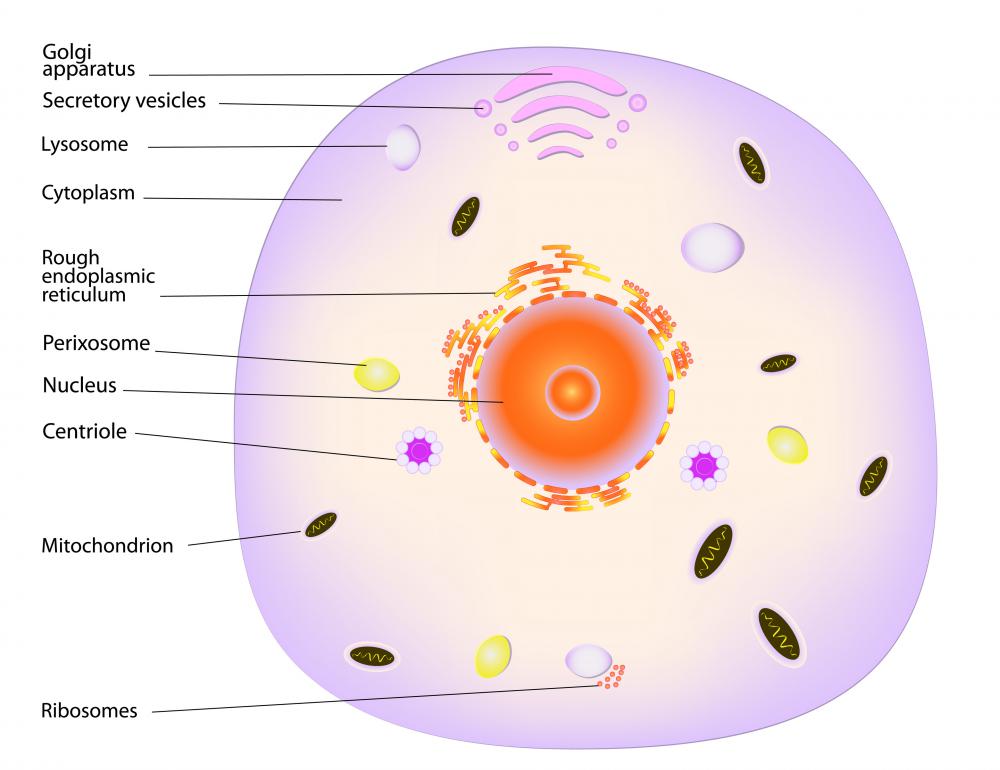At WiseGEEK, we're committed to delivering accurate, trustworthy information. Our expert-authored content is rigorously fact-checked and sourced from credible authorities. Discover how we uphold the highest standards in providing you with reliable knowledge.
What is Mitochondrial Dysfunction?
Mitochondrial dysfunction is a type of neuromuscular disease, meaning that it affects the various muscles and nerves of the body. Mitochondria are the structures within the various cells of the body that provide energy to the cell. There are various types of mitochondrial dysfunction, including a particular form of epilepsy known as myoclonus epilepsy. While there is no specific treatment or cure for mitochondrial dysfunction, individual symptoms may be lessened by physical therapy or certain types of vitamin therapy.
Myoclonus epilepsy is a relatively common form of mitochondrial dysfunction. Some symptoms of this condition may include short stature, loss of coordination, and seizures. Myoclonus epilepsy often presents as an involuntary twitching of various muscles of the body. While this condition is not life threatening, it can be severely debilitating in some patients. Treatment typically consists of anti-seizure medications, which are often needed for life.

Another form of mitochondrial dysfunction is a rare condition known as Kearns-Sayre syndrome. This condition tends to appear before the patient reaches adulthood and involves muscle weakness, particularly involving the eyes. Hearing loss and short stature may also be symptoms of this disorder. The most troubling symptom of this type of mitochondrial dysfunction are cardiac, or heart-related, problems. Treatment is directed at individual symptoms, particularly focusing on cardiac health.
One of the most serious forms of mitochondrial dysfunction is a condition known as Leigh syndrome. This is a degenerative brain disorder and is generally diagnosed before the age of two. Symptoms may include seizures and feeding problems, along with heart and lung dysfunction. Unfortunately, most patients with this condition do not live more than a few years.
Mitochondrial encephalomyopathy is yet another form of mitochondrial dysfunction. This disorder is classified as progressive, meaning that it tends to get worse instead of better with the passing of time. Mitochondrial encephalomyopathy involves several different body systems, including the heart, central nervous system, and the digestive system. Common symptoms include paralysis of the eye muscles, muscle weakness, and stroke-like activity in the brain. There is no known treatment for this condition, and due to its progressive nature it is considered to be fatal.
Limited movement is a common problem in many types of mitochondrial disorders. Physical therapy may help to provide for easier movement and a better quality of life in may patients. Vitamin therapies such as riboflavin and carnitine supplements may help to improve the energy levels in some patients as well.
AS FEATURED ON:
AS FEATURED ON:











Discuss this Article
Post your comments